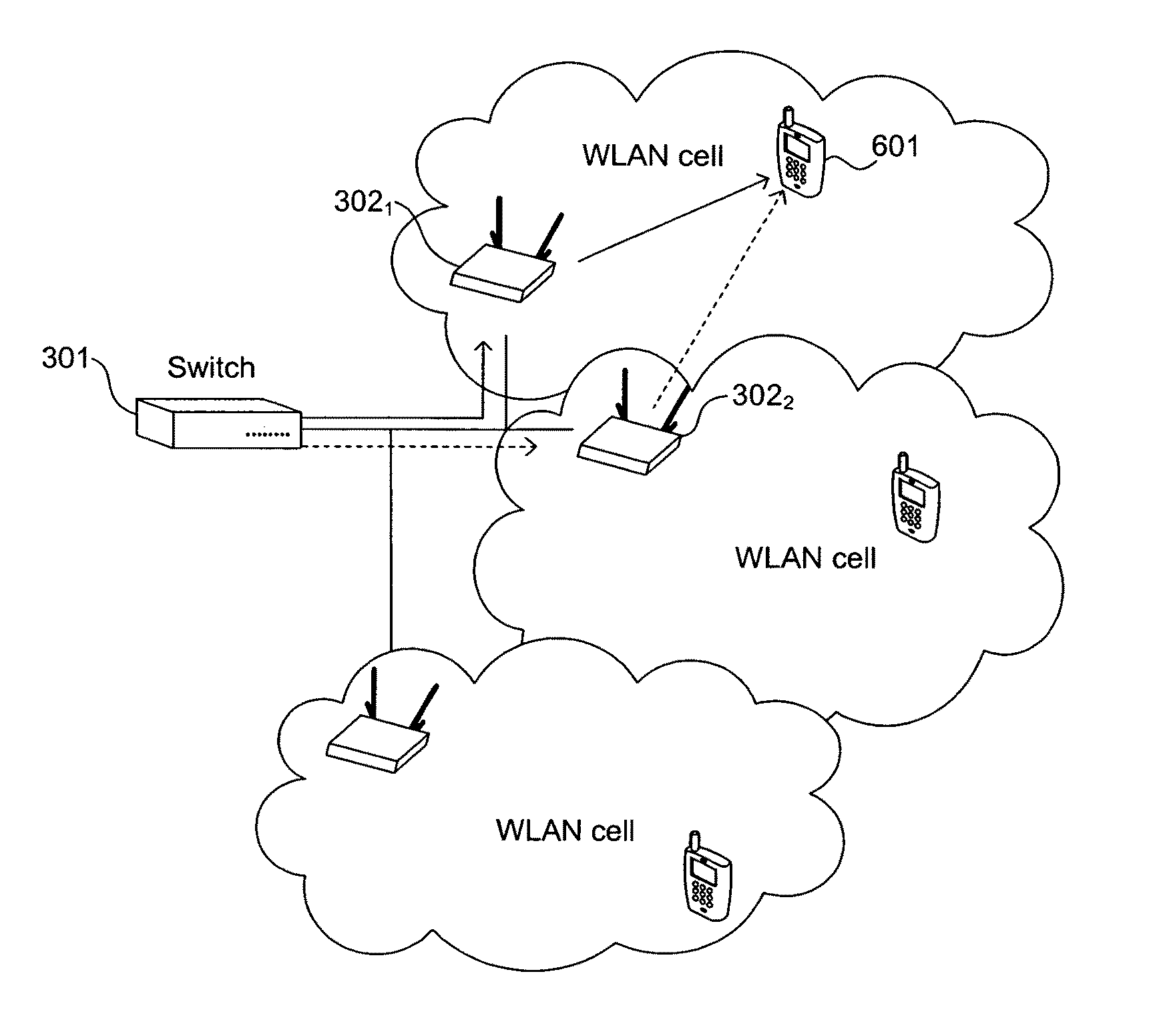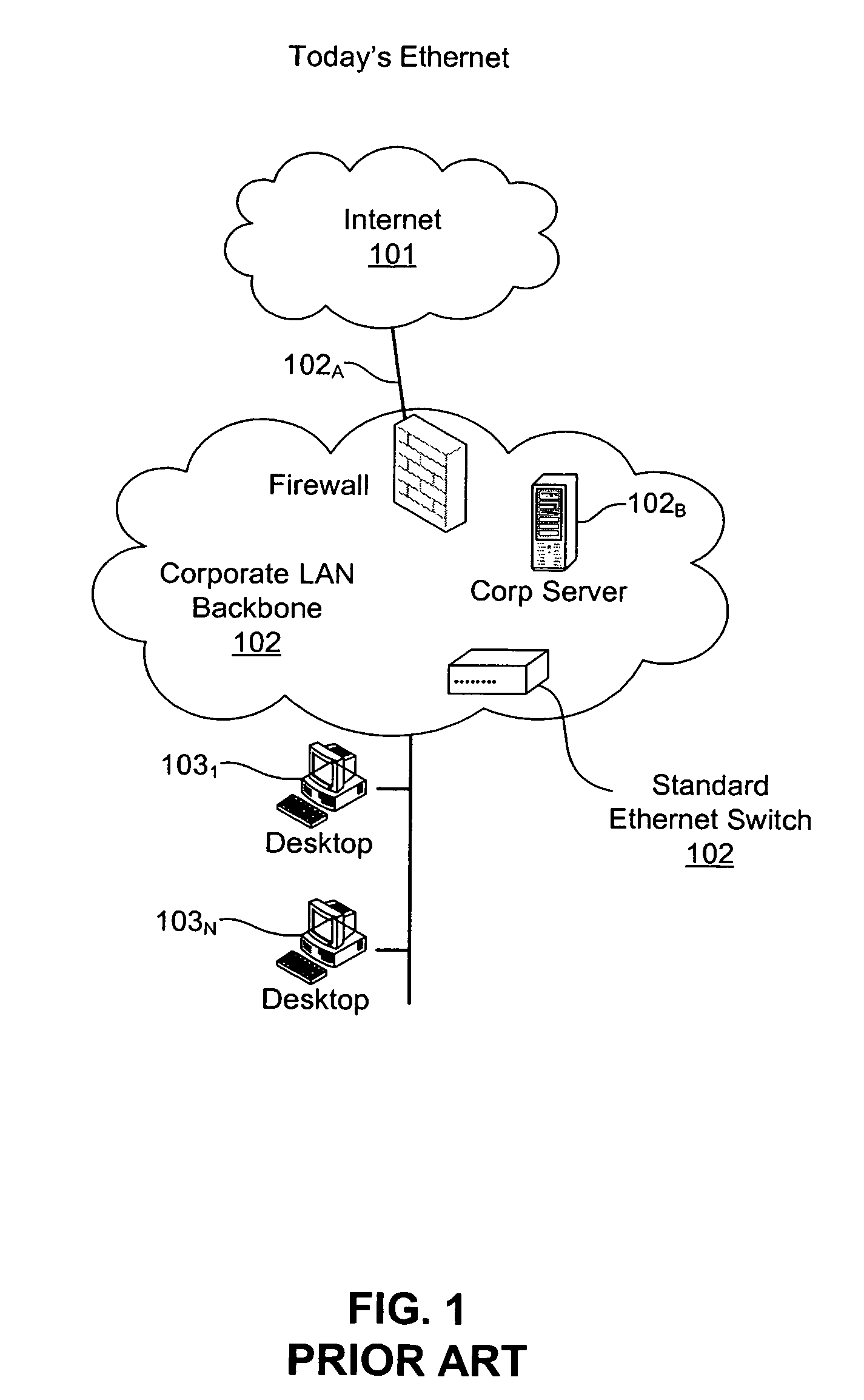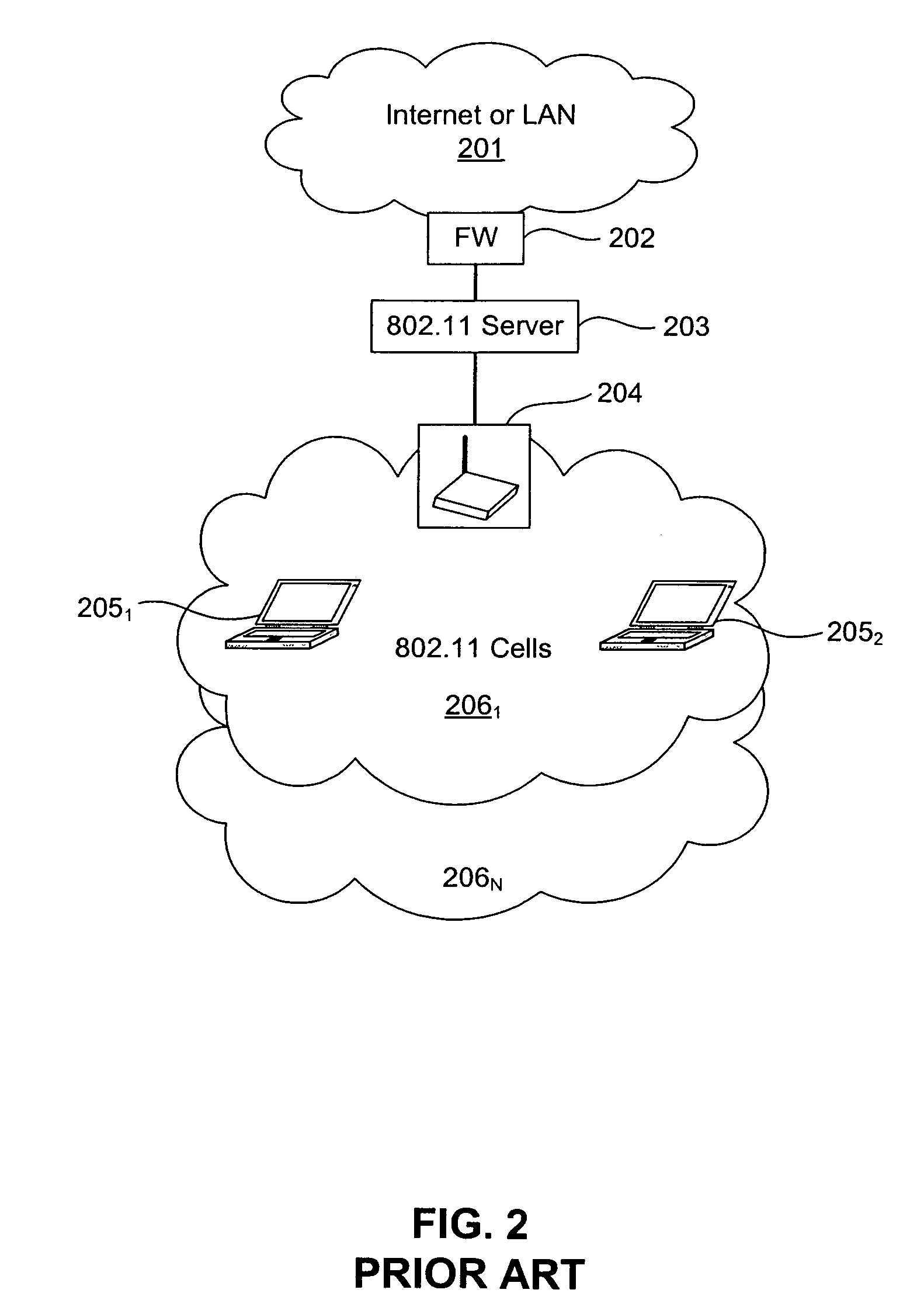Mobility support via routing
a technology of mobility support and routing, applied in the field of wireless communications, can solve the problems of reducing coverage, high cost, and reducing the number of access points, and achieve the effect of increasing the received signal strength
- Summary
- Abstract
- Description
- Claims
- Application Information
AI Technical Summary
Benefits of technology
Problems solved by technology
Method used
Image
Examples
Embodiment Construction
[0026]A communication system is described. In one embodiment, the communication system comprises a mobile station having a transmitter to transmit packets wirelessly according to a protocol and multiple repeaters communicably coupled with the mobile station. Each of the plurality of repeaters receives one or more packets of the wirelessly transmitted packets from the mobile station. Each of the repeaters receives an indication of which of the wirelessly transmitted packets were received without errors by other repeaters and a received signal strength for those packets. The communication system also includes a switch coupled to the repeaters. Each of the repeaters forwards to the switch each packet of the wirelessly transmitted packets that each repeater had received at a received signal strength higher than any other repeater.
[0027]In the following description, numerous details are set forth in order to provide a thorough understanding of the present invention. It will be apparent, ...
PUM
 Login to View More
Login to View More Abstract
Description
Claims
Application Information
 Login to View More
Login to View More - R&D
- Intellectual Property
- Life Sciences
- Materials
- Tech Scout
- Unparalleled Data Quality
- Higher Quality Content
- 60% Fewer Hallucinations
Browse by: Latest US Patents, China's latest patents, Technical Efficacy Thesaurus, Application Domain, Technology Topic, Popular Technical Reports.
© 2025 PatSnap. All rights reserved.Legal|Privacy policy|Modern Slavery Act Transparency Statement|Sitemap|About US| Contact US: help@patsnap.com



